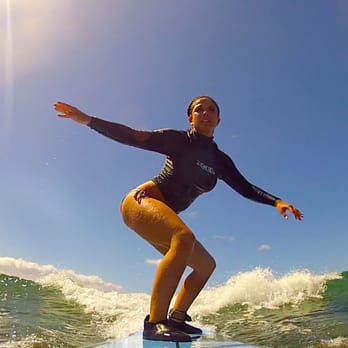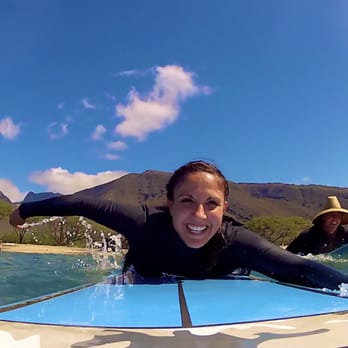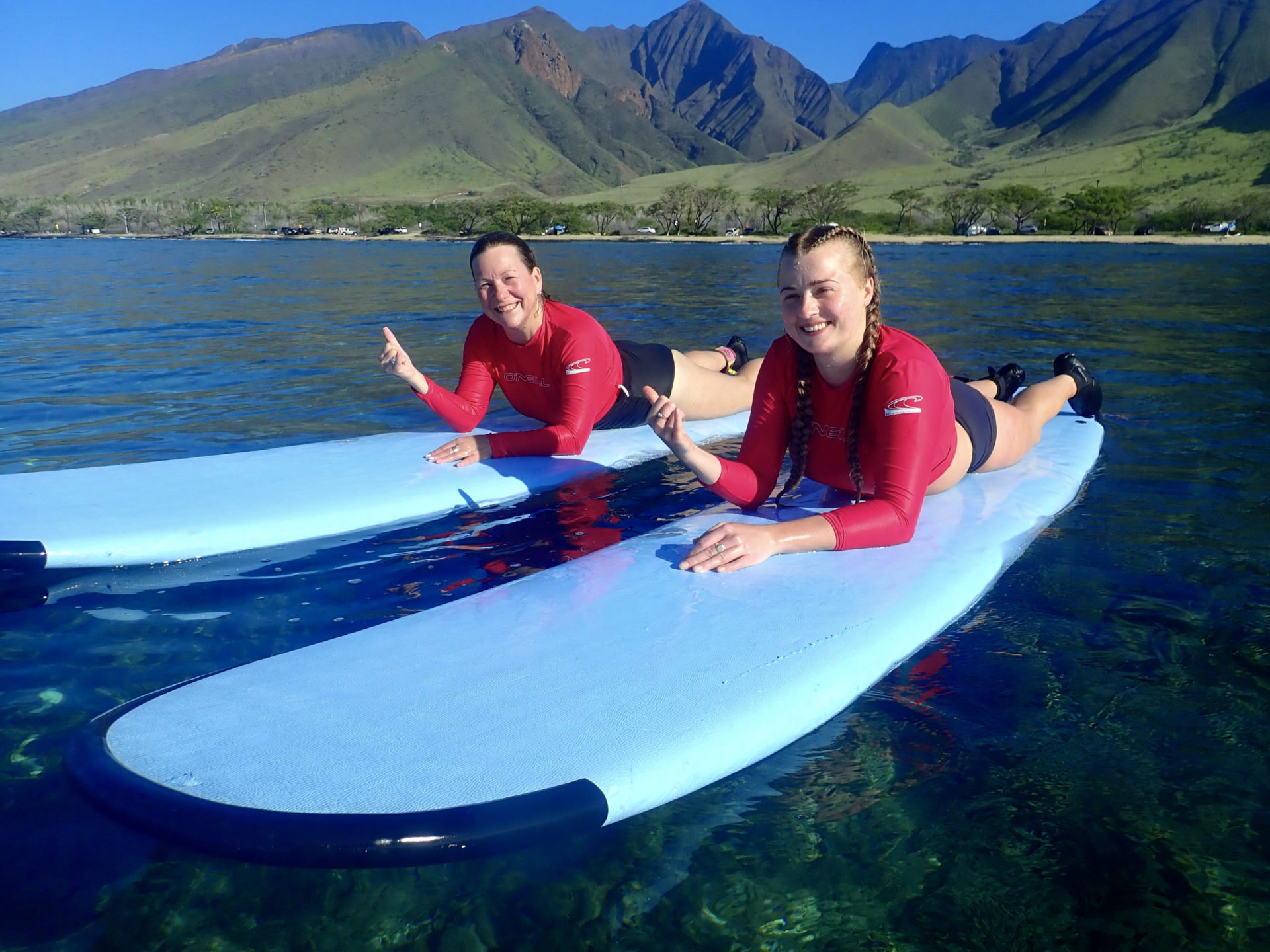Surfing lessons on Maui are important because surfing isn’t as easy as it seems. Spending some time to take surfing lessons on Maui gives you the huge opportunity to learn all the basics of surfing and acquire the relevant skills you need to become an accomplished surfer.
More so, surfing lessons on Maui are important because surfing involves being out there in the vast ocean which can be as dangerous as it is beautiful. In large wave conditions only seasoned surfers with strong swimming skills should venture out. No matter your experience level Soul Surfing Maui surf instructors will teach you to be aware of the risks and safety measures required to surf safely around Maui.
You also need the right equipment to make the most of your surf session. Whatever board you opt for should be suitable for your body specs, ability level and surf conditions. For instance Long Boards are easier to paddle, stand on and ride making it a good option for beginners. Foam Long Boards are recommended if you are just starting out – these are wrapped in a soft layer that offers more safety than a hard board in the event of a wipe out. Hard Long Boards are a common choice for advanced surfers in small to medium sized waves because they are lighter and perform better than soft boards. Short Boards are the most difficult to ride and only an appropriate option for experienced surfers that have excellent paddling and balance skills. FYI It typically take years of die hard dedication to get good on a short board.
As for your surfing attire in Hawaii, most just skin it or where a rash guard. But if you intend to stay in the water for long periods consider wearing a neoprene wetsuit Top or ‘Shorty’. It’s nice to be warm!
SKILLS YOU WILL LEARN WITH SOUL SURFING MAUI SURF LESSONS.
Here are the core skills you’ll learn and acquire when you go for surfing lessons on Maui:
Nor again is there anyone who loves or pursues or desires to obtain pain of itself, because it is pain, but because occasionally circumstances occur in which toil and pain can procure him some great pleasure. To take a trivial example, which of us ever undertakes laborious physical exercise, except to obtain some advantage from it? But who has any right to find fault with a man who chooses to enjoy a pleasure that has no annoying consequences, or one who avoids a pain that produces no resultant pleasure
laborious physical exerciseOn the other hand, we denounce with righteous indignation and dislike men who are so beguiled and demoralized by the charms of pleasure of the moment, so blinded by desire, that they cannot foresee the pain and trouble that are bound to ensue


HOW TO PADDLE YOUR BOARD
There are two key methods you can use to paddle your board in the water. These include:
Freestyle Prone Paddling – this method involves using your arms paddling one after another like a swimmer. Long, deep strokes are the goal while making a slight S underwater with your hands. You want your freestyle stroke to be both efficient and graceful. This requires that you position your body correctly on the board, then keep your feet together and paddle gracefully with your arms one after another while keeping your torso arched and chin high.
Breast Stroke Style Paddling – This is where both arms come out of the water and go back into the water at the same time. This is similar to a ‘breast stroke’ in swimming. Breast Stroke paddling is appropriate for high volume long boards. Many seasoned Long Board surfers will choose this stroke when riding a ‘Log’ or ‘Tanker’. It’s an Old School technique and an art form when done properly. But most agree that the Freestyle Prone paddle is what everyone needs to get good at, with this paddle style you always having one arm in the water propelling you forward.
OTHER SKILLS YOU WILL ACQUIRE:
Core stability – during surf lessons you’ll learn how to hold your shoulders, torso and pelvis in form while surfing long periods of time. Once you understand how to hold your posture, you’ll be able to keep the board stable and ride gracefully.
Breath management – during surf lessons on Maui, you’ll learn how to hold your breath without panicking during a Wipeout or being caught inside. Breath management is also a must when it comes to ‘Duck Diving’ and ‘Turtle Rolls’. Staying calm is always the goal.
Flexibility – you’ll learn how to improve your mobility while surfing. Being flexible will go along way in having graceful movements on the the board. If you are not a very limber person you will want to work on that! Most surfers have a daily pre-surf stretch routine that they do before paddling out. The more nimble you are the easier the experience will be on your body and this will help you steer from injury.
SURFING ETIQUETTE
Surfing is a free and recreational sport. However, if you are new to it you still need surfing lessons on Maui to understand the key etiquette’s of the sport to help you and others stay safe while in the ocean. Here are ten key etiquette’s you’ll most likely learn during surfing lessons on Maui.
- if you cause a collision or make a mistake, don’t hesitate to apologize and make sure everyone involved is okay.2) If a surfer is already riding a wave and coming your way, hold back and do not drop-in. Drop-In’s are never ok unless it’s with a friend who gives you the okay to go. Careless dropping in on someone can be very dangerous and many accidents have happened this way. And always avoid paddling around another surfer that has priority.
- If you’re having a bad day, don’t take it out on other people. Bring only good vibes to the water. The quality of your session is largely in your attitude.
- Whoever is closest to the peak of a breaking wave has right of way. Always communicate with the other surfers in the water if you are not sure who’s turn it is. A simple smile and friendly nod go along away.
- Respect other surfers, their belongings and their gear. Not just in the ocean, but on the beach and even in the parking area. Everyone should be ‘looking out’.
- Respect other surfers right of way. If you do not understand the rules of ‘right of way’, ask your instructor to explain the fine points so you can do your part to keep it safe out there. Right of way (or Right Away ) is important to exercise at any surf spot you go to.
- Don’t be greedy and ‘steal’ other riders waves. This often called a ‘Snake’ maneuver. Never do this on purpose – It’s just bad style. Rather, share the surf and pay it forward by giving a wave to another surfer even if you feel it was your turn to go.
- If you’re surfing on a State/County patrolled beach, don’t forget that surf board riders cannot surf in between the flags during ‘Black Ball’ hours. Flags may be posted for other reasons as well. Always check in with an on duty lifeguard or surf instructor if your not familiar with flag rules.
- If you are surfing in a crowd be polite and don’t try to catch every wave that comes your way. If you see someone who is struggling to get a good one, maybe see what you can do to help get them started with a fun wave. Always pay it forward. Remember, even Pro surfers started out as Newbies.
- Keep your eye out for other surfers that look distressed or need a helping hand. Helping others out of a tough spot puts Stripes on your shoulder and will be noticed by other seasoned surfers in the water. Remember, one day it may be you that needs help!


Lorem ipsum dolor sit amet, consectetur adipiscing elit, sed do eiusmod tempor incididunt ut labore et dolore magna aliqua. Ut enim ad minim veniam, quis nostrud exercitation ullamco laboris nisi ut aliquip ex ea commodo consequat.
Lorem ipsum dolor sit amet, consectetur adipiscing elit, sed do eiusmod tempor incididunt ut labore et dolore magna aliqua.
Duis aute irure dolor in reprehenderit in voluptate velit esse cillum dolore eu fugiat nulla pariatur.